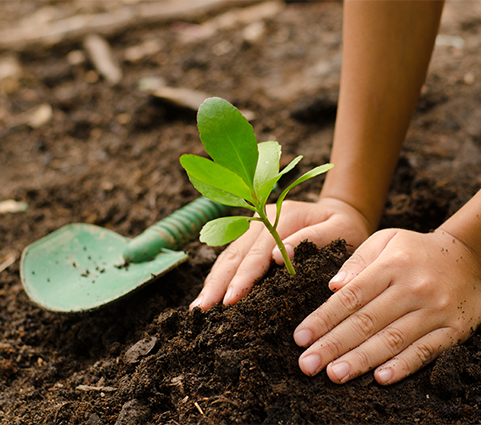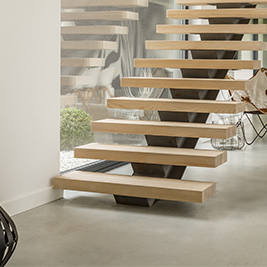Anxious that the hot season will leave your plants dead as dust? Our detailed guide to a blooming summer paradise will put your worries to rest.
Spring is upon us! And now is the time to shower some dedicated TLC upon your garden and bring it back from the barren icy grip of winters, to ensure you have a thriving garden ready for some bright and sunny entertainment. Here’s all you need to know for having a flourishing green patch.
When to plant
The best time is the end of February through March, right when your sweaters start to come off. Choose a day that isn’t too windy. Harsh wind scan causes stress to your saplings’ roots and hurt their growth trajectory. So a calm, cloudy day is the best time to plant, when neither wind nor sun can cause much harm.

Preparing the soil for planting
Start by removing any weeds. Weeds compete for nutrients, sunlight and water. Then loosen up the soil using akhurpi and let the soil absorb sun for a day or two. Add organic compost such as ghanjivamrith or vermicompost along with some neem khali. Finally, add a 1-inch layer of mulch. If you’re growing in containers, use a good potting mix to help retain moisture and keep the soil aerated and well-drained.
The art of watering
Ensure that you water your plants generously, right after planting. Following this, water frequently enough to keep the top 1-inch of the soil moist. Water the plants during the cooler parts of the day, either early in the morning or late in the evening. Watering during heavy sunlight can cause scalding and damage the leaves. During extreme heat, water both in the morning and evening. Be careful not to over water as this can cause fungal diseases. Rotten roots are a sign of over watering. It’s usually best to water frequently in large quantities. But since most of our cities have water shortages in the summer, it’s better to water heavily and occasionally, as this encourages deeper root growth into cooler (and hopefully more moist) layers of soil. Frequent light watering encourages lush growth but also promotes shallower roots, making the plant less prepared to cope on exceptionally hot days. Above all, to ensure your soil remains moist, you need to mulch! In the summer, I usually keep at least a 2–3-inch layer of mulch over all my potted plants and at least a 1-2 inch layer on the ground.

Summer specific fertilizing
Apply dry as well as liquid manure once every 2-4 weeks. Plants in pots and confined containers need frequent nutrition to thrive. Especially vegetables like brinjals and gourds require extra manuring for prolific fruiting. Remember, that your plants are just emerging from the relatively slow and dormant winter so they have a larger energy requirement to sustain their increased growth in the warm weather.
Extra, Extra!
- When it comes to choosing veggies for planting, it’s better to opt for native and seasonal varieties.
- Mist plants once a day to keep them cool, especially on terraces.
- Keep plants in clusters so that only one side is exposed to the sun and water is lost only on the external sides.
- Create a shade structure and cover the plants under a good quality, 35-50% white shade-net to allow optimum diffusion of light and also keep the area cool.‘Shade factors’ refer to the degree of blocked sunlight, and can range from 25–90%. Sensitive plants like salad greens may require a 50–60% shade factor while more heat tolerant plants like squash and beans may benefit from a 30% shade cloth.
- Harvest ripe fruit promptly, as they demand a lot of water from plants.
- Mulch! Mulch! Mulch! Because nothing can be worse that leaving your soil naked to the sun.
WHAT YOU CAN PLANT
It’s a good time to begin a vegetable or herb garden.
- - Ladies’ Fingers
- - Gourds – Tinda, tori, ghia, khira, kakdi, zucchini,karela
- - Brinjals
- - Peppers and Chillies
- - Lobia
- - Basil – various varieties
- - Ajwain
- - Lemon grass
- - Mint
- - Curry
- - Yellow or orange cosmos
- - Gaillardia
- - Coreopsis
- - Portulaca
- - Gomphrena
- - Vinca
- - Zinnias
Home calculations made easy to help you plan your home
MISSED CALL
Give us a MISSED CALL for New Home Loan
- 09289200017


































